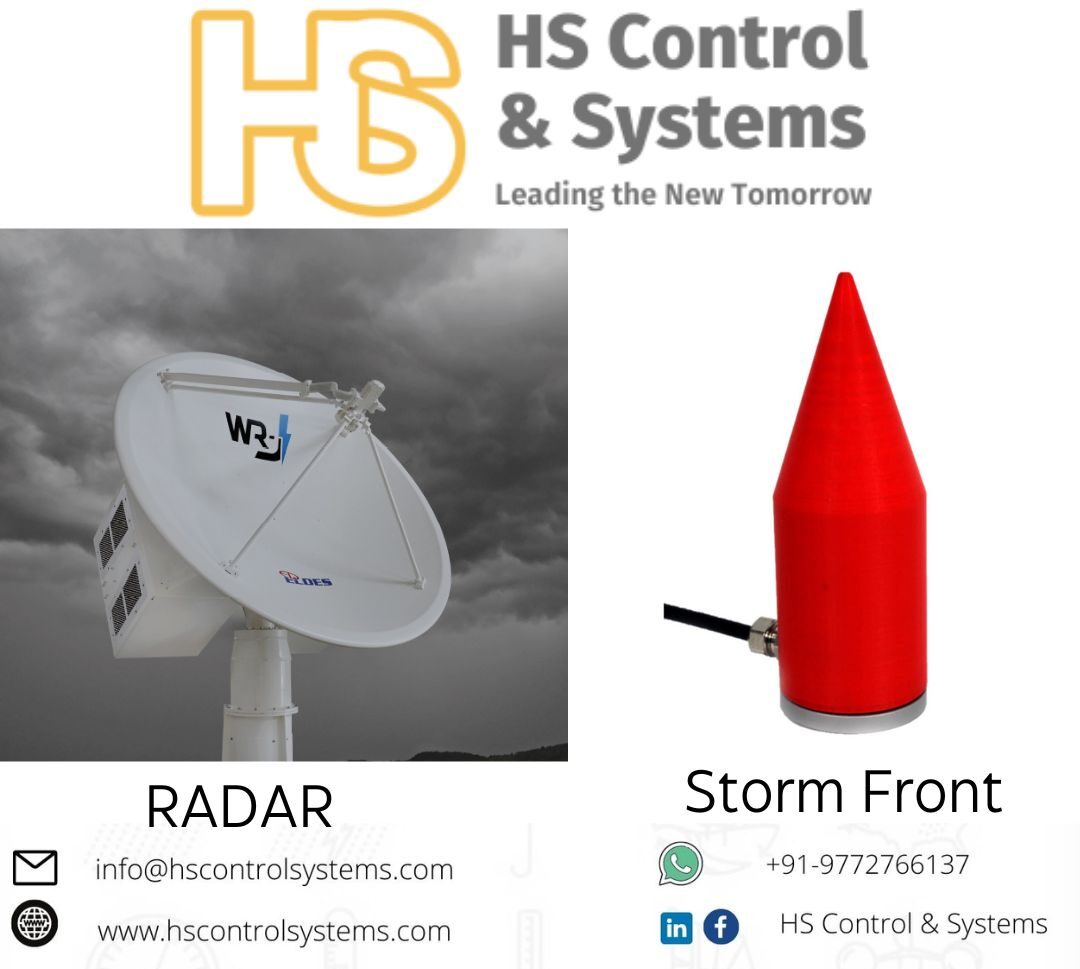Choosing correct sensor or solution as per requirement is must. Lets have a look
Storm detection sensors and RADARs (Radio Detection And Ranging) are both used in meteorology to detect and monitor storms, but they operate based on different principles and have different capabilities. Here are the key differences between storm detection sensors and RADARs:
1. Principle of Operation:
– Storm Detection Sensor: Storm detection sensors, also known as lightning sensors or lightning detection networks, are designed specifically to detect and locate lightning activity within a storm. They detect the electromagnetic signals produced by lightning discharges, such as radio waves or electromagnetic pulses.
– RADAR: RADAR systems use radio waves to detect and track objects in the atmosphere, including precipitation particles within a storm. They emit radio waves and measure the time it takes for the waves to bounce back after hitting an object. By analyzing the returned signals, RADARs can determine the location, intensity, and movement of precipitation.

2. Detection Capability:
– Storm Detection Sensor: Storm detection sensors primarily focus on detecting lightning activity, including cloud-to-ground and intra-cloud lightning. They can provide real-time information about the location and frequency of lightning strikes, helping to identify areas of active storm development.
– RADAR: RADARs are capable of detecting a broader range of atmospheric phenomena. They can detect precipitation types (rain, snow, hail) and their intensity, as well as the structure of storm cells, such as the presence of updrafts and downdrafts. RADARs can also provide information about storm motion and can be used to track the development and evolution of storms over time.
3. Coverage and Range:
– Storm Detection Sensor: Lightning detection networks typically consist of multiple ground-based sensors strategically placed to provide coverage over a specific region. Their range of coverage can vary, but they are generally limited to detecting lightning within a few hundred kilometers of their sensor network.
– RADAR: Weather RADARs have a wider coverage area compared to lightning sensors. Depending on their design and installation, they can cover several hundred kilometers or even larger areas. RADARs are commonly used for regional and national weather monitoring.
4. Data Interpretation:
– Storm Detection Sensor: Lightning detection sensors provide data about the occurrence and intensity of lightning strikes. This information can be used to estimate storm severity and track storm activity, but it requires further interpretation to understand the overall storm structure and associated precipitation.
– RADAR: RADARs provide detailed information about storm structure, precipitation intensity, and movement. The data from RADARs can be used to generate various products, such as reflectivity maps, velocity data, and precipitation estimates, which aid in weather forecasting and severe weather monitoring.
In summary, storm detection sensors primarily focus on detecting lightning activity within storms, while RADARs provide a broader range of information about storm structure, precipitation, and movement. Both technologies play complementary roles in meteorology, and their data can be combined to enhance our understanding of storms and improve weather forecasting.






